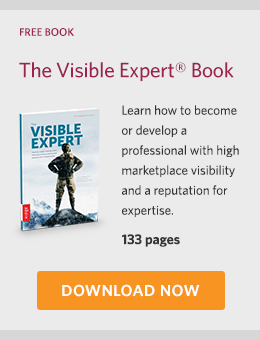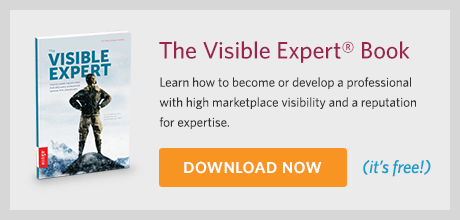What makes an amazing keynote speaker? You know them when you see them. These people are skilled orators. Audiences hang on their words, scribbling notes furiously, not a drooping eyelid or yawn in the crowd.
There’s a mystique that surrounds them. From the podium they project an aura of authority, knowledge and wisdom. Yet they seem natural, relaxed, engaging.
But who are these people? What extraordinary gifts do they possess? Can mere mortals like you and me become like them?
Here’s a secret: most of these speakers are no different from the rest of us. They aren’t smarter or more talented or better looking. And they’ll admit it (the honest ones, anyway).
So how did they get there? Hard work. And they had a solid plan.
Here’s how Joe Pulizzi, founder of the Content Marketing Institute, described his first time on the podium:
“They’re announcing my name, and I’m walking out onto the stage to deliver the keynote. Everyone’s clapping. Almost a thousand people from 27 different countries have traveled here, to my event, to hear what I have to say. I look out over the crowd and everything’s quiet. And that’s when it hits me: I’ve really made it.”
And you can, too.
What Is a Keynote Speaker?
A keynote speaker is an expert or celebrity, usually already familiar to the audience, who delivers a speech that sets the tone or theme for an event. Speakers are usually chosen for their ability to attract attendees to the event, offer unique insights and inspire the crowd.
So what does this mean for you? How do you infiltrate the keynote clique?
- You have to be fairly well known in your industry
- You have to be an experienced speaker
- You need to have something interesting to say
Let’s explore what it takes to meet these criteria.
 Build on Your Expertise
Build on Your Expertise
Presumably you aren’t a celebrity yet, so you’ll have to build your reputation the old fashioned way. That means mining your expertise for interesting topics and issues.
Sometimes it pays to be controversial. Taking counter-intuitive or provocative positions can add a spark of the unexpected and increase interest. If you take this approach, be sure you’ve got compelling ammo to back it up or you may find yourself counter-audience!
Plug into Your Audience
The best speakers have a bit of the audience in them. They are engaging because they are able to put themselves in their listeners’ shoes and communicate that what they’ve accomplished is the result of a focused process rather than good fortune or personal connections. Including anecdotes and examples from your personal experiences makes you more real and allows the audience to connect with you.
How to Get Started Speaking
Set realistic expectations. If you are just beginning, start small.
This may mean taking unpaid opportunities and speaking at local chapters of larger associations to gain initial experience. You can also join an organization like Toastmasters International to get practical experience in a low-pressure environment.
As you gain experience and confidence, begin looking for larger speaking opportunities, such as a conference session.
Take whatever opportunities you can at first. Later, you can be choosier. Once you have a few quality speaking engagements under belt, you can begin seeking out venues to deliver your first keynote.
The Public Speaker’s Toolkit
If you want to make public speaking a regular part of your work life, you’ll need a couple of tools.
1. A Speaker’s Kit
This kit contains information about you (the speaker) and your firm in one convenient package. Because you will have already prepared the most commonly requested materials, your kit makes speaker submissions a lot easier—and it signals that you are a pro who is equipped with the right set of tools. Here’s what to include:
- Introduction
- Backgrounder
- Case studies or testimonials
- Publications / past speaking events
- Bios of various lengths
- Speaker introduction (2 versions — short and long)
- Professional photos
- Contact details
2. Speaker’s Web Page
Whether it’s an enhanced bio page on your firm’s website, or a stand-alone personal website, you’ll need a place on the Internet to promote your speaking experience. You’ll want to include the following:
- Relevant information or testimonials from past speaking engagements or events.
- A button to download your press kit: (For instance: “Download Press Kit.” No need for extravagance, but research has shown that people typically favor a button over a simple link.)
- A button to book you for an event: “Book [Your name here].”
- Your firm’s logo for use in promotional pieces (if appropriate).
- Professional photos. These should include both standard headshots and photos of you speaking.
- A short video (1 to 3 minutes) of you speaking at a conference. Once you’ve gained some experience, start taping your speeches. You’ll be glad you did.
How to Find Speaking Events
Even if you are an experienced speaker, you’ll still need to up your game if you want to land top keynote opportunities.
Here are a few ways to find good events and start building your portfolio:
- Look for relevant associations. Professional and industry associations are a great source of opportunities, as they tend to have larger conferences and events. And many have local chapters with smaller events that can be perfect introductions for beginning speakers.
- Search using a geographical area. If you are targeting a particular geographic region, consider adding that to your search parameters.
- Check out your competition. Look at competitors’ speaking histories and see if any of their past speaking venues would make sense for you.
- Search by your area of specialty. Search online for your area of expertise to see if that generates opportunities.
- Check out speaking bureaus. Check out https://www.nationalspeakers.com for more information.
What goes into a great presentation? That’s a topic for another post, but in the meantime I would encourage you to watch this TED Talk by Nancy Duarte, a the leading authority on modern presentation design. She explains the simple but powerful structure behind most successful speeches, from Steve Jobs to Martin Luther King.
There are three key focus areas for your journey. Learn to deliver a great speech. Create the marketing tools you need. Build your portfolio of speaking engagements.
Master those key milestones and you’ll be well on your way to becoming a keynote speaker — one whom people can’t wait to hear.
Additional Resources:
- Find out how you can become an industry star and keynote speaker. Read the defining book on the topic: The Visible Expert. It’s free!
- Download Hinge’s Content Marketing Guide for Professional Services Firms for tips on creating content that builds credibility and demonstrates expertise.
- Get a wealth of practical, step-by-step how-tos, topical overviews and in-depth courses to take your Visible Expertise to a higher level. Join Hinge University today!
How Hinge Can Help:
If you want to become a high-profile industry star, Hinge’s Visible Expert Program is made for you! We’ll guide you through the research-based process that will make you a sought-after speaker and writer in your field. Get started today!


